Search Results
Fine Jewelry University Articles matching: “Cubic zirconia ring”
Showing only FJU Article results. Click here to show all results.
Fine Jewelry University (Show All FJU Articles)
-
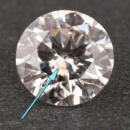
What Are Lab Grown Diamonds?
… that lies at the heart of our laser welder . The most popular diamond simulant by far today is synthetic Cubic Zirconia (CZ) . It is cheap to produce and sparkles very brilliantly. It is a great example of a synthetic gemstone that is a … confusion it can create. There is another diamond simulant that creates a lot of confusion. Diamond coated Cubic Zirconia (CZ) gems are produced using the same Chemical Vapor Deposition (CVD) technology that is used to produce lab grown …
-
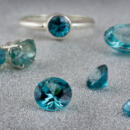
Gem in the Spotlight: Blue Zircon
… the generations. Final Thoughts Zircon has one major problem not of its own making. It is often confused with Cubic Zirconia, a synthetic diamond simulant. Cubic Zirconia, also known as CZ, is even incorrectly shortened to zircon by some. …. Zircon is a natural gemstone with amazing characteristics which is not to be confused with cheap, manmade Cubic Zirconia. Zircon is a remarkable gemstone with wonderful colors and brilliant flashes of light. To top it all off, zircon is …
-

How to Tell If a Diamond Is Natural or Lab Grown
… as natural diamonds, but we still want to be able to tell them apart. When it comes to diamond simulants like Cubic Zirconia (CZ) or Moissanite, it is easy to identify them because they aren’t diamonds. But, with lab grown diamonds, the … and GIA (the Gemological Institute of America) have developed even more complex and sophisticated machines for answering this question. They have imaginative names like DiamondCheck, DiamondSure, and DiamondView. Roughly speaking, these …
-

How Are Lab Grown Diamonds Made?
… (HPHT) manufacturing. There are three basic manufacturing processes used to make HPHT diamonds: the belt press, the cubic press, and the split-sphere (BARS) press. The goal of each process is to create an environment of extremely high …, HPHT technology has been constantly advancing. Belt press designs have been dramatically scaled up, more modern cubic and split-sphere presses have been introduced which are more efficient, and larger, more perfect gems are being …
-
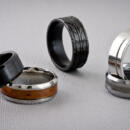
Alternative Metals for Men’s Jewelry
…. It has been used in the space, aeronautic, and even the medical industry. Zirconium is not to be confused with Zirconia , as in Cubic Zirconia (commonly called CZ), which is a very different, man-made material. The black layer of Zirconium …Titanium is very light weight which is its hallmark feature and one of the reasons it is used so heavily in manufacturing. It resists scratching well, and it is both hypoallergenic and biocompatible. Titanium is stronger than steel yet …
-
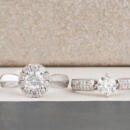
Anatomy of a Ring
Knowing the different parts of a ring can help you make a better decision when choosing a new ring and it can help you know when your ring may need … ring has a shank. This is the technical term for the band of metal that encircles the finger. There would be no ring without the shank. If the ring has a distinct design feature on the top part, the ring shank is generally said to start … point that the design stops. A jeweler will usually add or remove metal from the bottom of the shank when sizing a ring. This can sometimes be done so well that you would never know it was sized looking at the shank with your naked eye. …
-
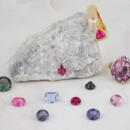
Gem in the Spotlight: Spinel
…hardness of 8 and good toughness spinel is a great choice for all forms of jewelry. We recommend occasional wear for rings and bracelets, but earrings and pendants are suitable for daily wear. Spinel can come in virtually any color of the… guidance systems. It even has the potential to make its way onto our smartphones as a super durable, glass-like covering. History and Lore of Spinel Spinel is arguably the most overlooked and underappreciated gemstone of all time. Spinel…
-
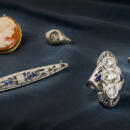
How to Value Inherited Jewelry
…their offer can be significantly lower than even the intrinsic value of a piece. We have even heard of cases where a ring with a one carat diamond and $50 in scrap gold was valued at $50 by these operations. The intrinsic values for the … some of the strongest value to jewelry, but a professional jewelry appraiser has no way of establishing or measuring this value. In the end, it is up to the family to work out a just solution. The desire to have a fair equitable division…
-
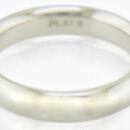
Platinum
…. Platinum is rare, the coveted treasure of discerning individuals. Platinum is one of the strongest and most enduring metals. Some of the world’s greatest treasures are set in platinum, such as the Hope Diamond. It is also one of the …. These qualities of platinum are equivalent to the ideals of eternal true love. All over the world, engagement rings, wedding bands and anniversary rings made in platinum symbolize the everlasting endurance of love. Platinum is pure, an …